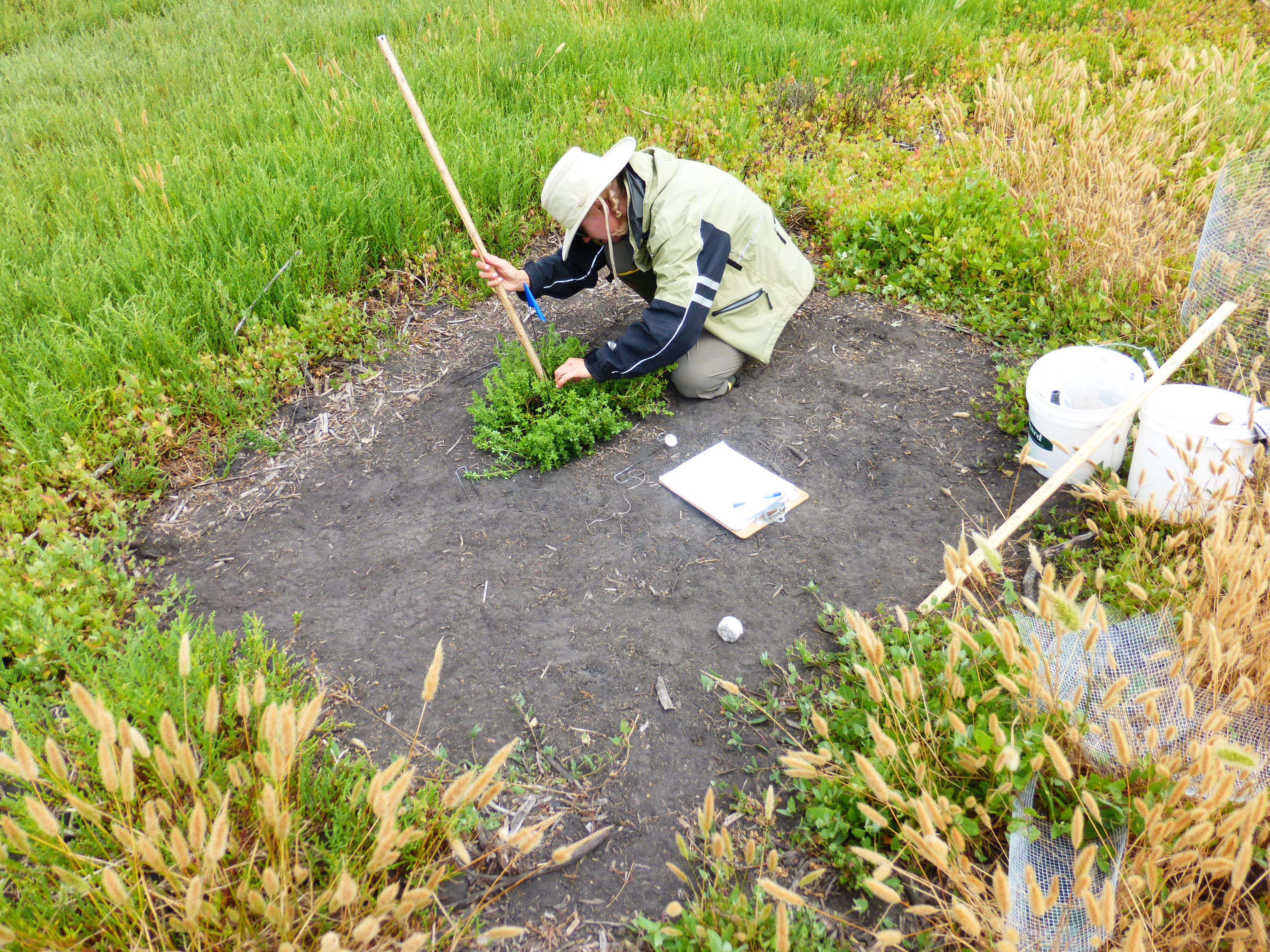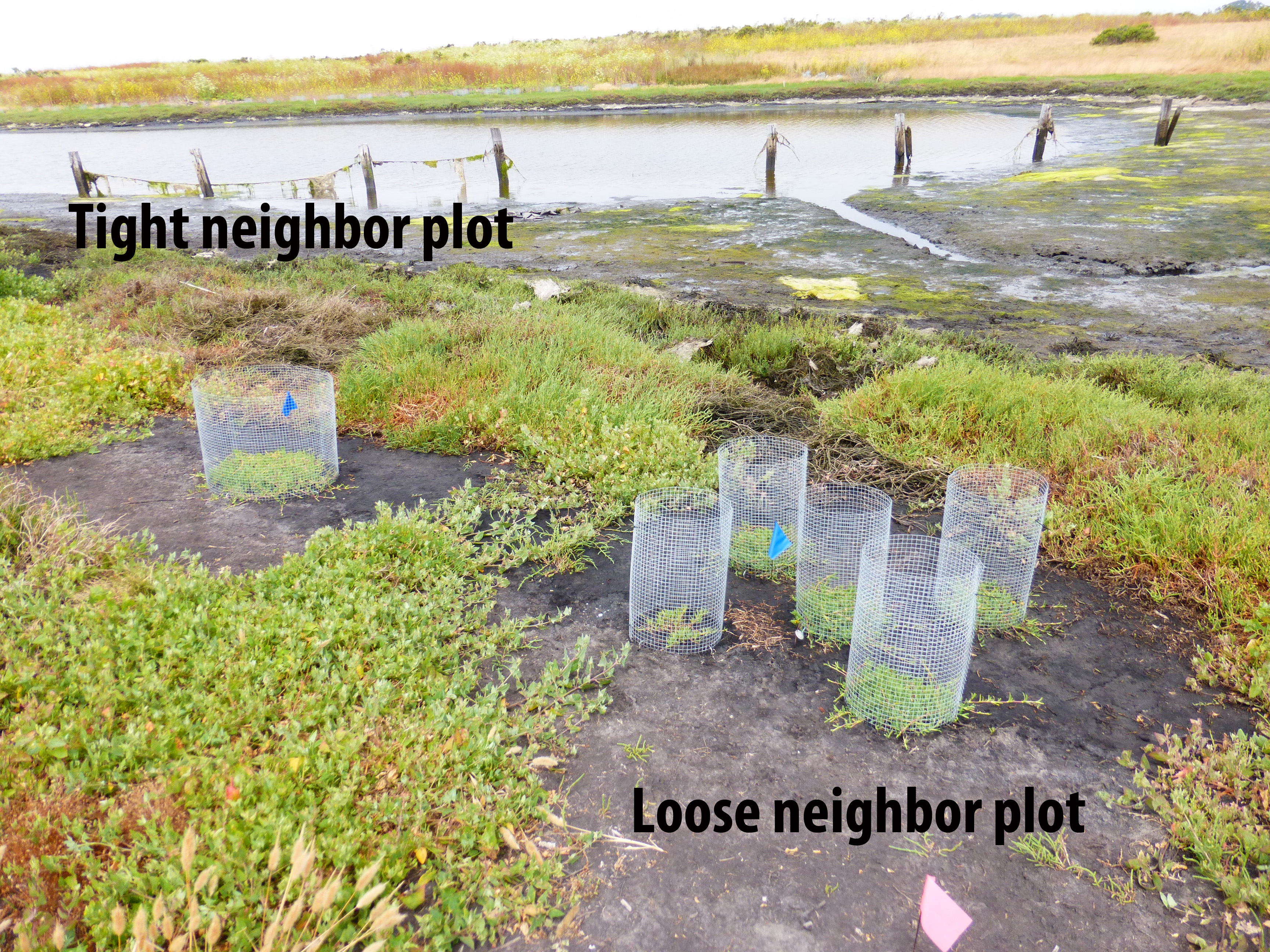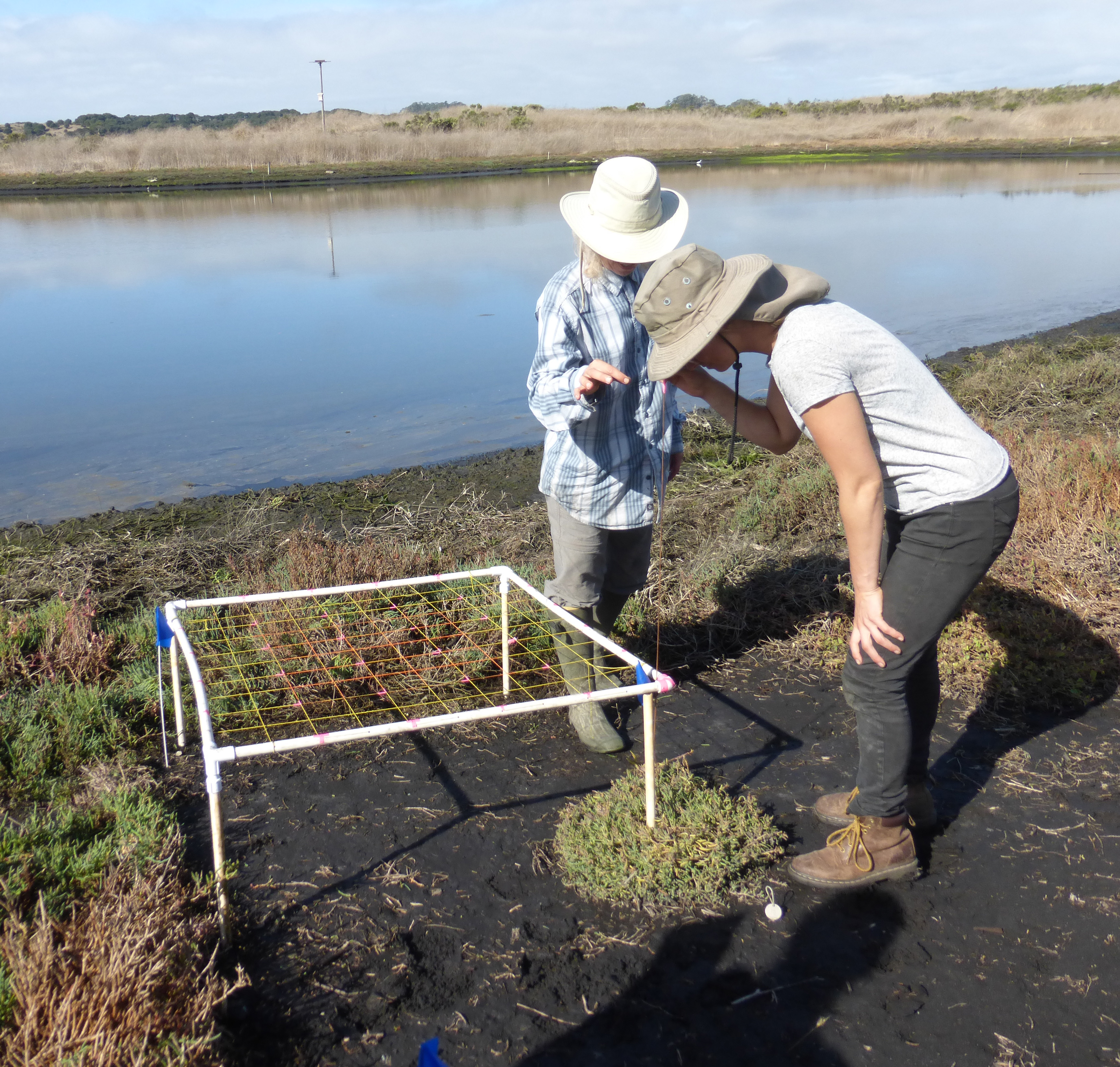at Elkhorn Slough National Estuarine Research Reserve



Plant communities are the cumulative outcome of species responding to each other, as well as to their physical surroundings. Historically, ecologists have focused on the ways in which negative interactions between plants help drive community structure; for example, the elimination of some plants by other species that are superior competitors for light or nutrients. In recent years, we have come to recognize that facilitation between plants can also have an important role in community formation. Facilitation occurs between individuals when neither is harmed by an interaction, and at least one partner benefits. In the case of salt marsh plants, neighbors can shield each other from physical stress. Salt marsh natives experience growing conditions that are unusual for most terrestrial species; plants are regularly flooded with seawater, and even after tidal waters recede, this influence lingers in the form of elevated salt concentrations in the soil, making marsh soils inhospitable to most plants. Salt marsh natives are evolved to cope with tidal inundation, as well as saline soil; but even for marsh specialists, conditions may be stressful at times – particularly during dry Mediterranean summers, when evaporation concentrates salts present in the soil. At these times, the presence of other plants nearby may be beneficial, because shade from neighbors can lower soil temperatures and slow moisture loss.
Positive effects of neighbors may be particularly important in salt marsh restoration projects, where transplanted seedlings are usually small and sensitive to stress. Work by Silliman et al. (2015) found that most organizations engaged in salt marsh restoration still use traditional, widely spaced planting designs, originally conceived to minimize competition between individuals in plantations. But in a potentially stressful system like salt marsh, this might not be the best strategy – and Silliman et al. hypothesized that restoration outcomes would be better, using the same number of transplants, if seedlings were planted close together. They found that clustering plants in a coastal Spartina restoration project had a positive effect on biomass, supporting a recent call to incorporate facilitation into restoration designs for salt marsh communities. However, this study is one of very few that tests effects of plant interactions on restoration outcomes – and although these studies do show positive effects of clustering, they focus on early stages of restoration, and most examine a single species. How do we know whether clustering will provide a net benefit over the long term, or if the benefits observed so far would be realized for other species as well? The best way to find out is to conduct experiments with multiple species, tracking performance of individuals from seedlings through adulthood, to determine whether neighbor effects shift from positive to negative (or vice versa) across life stages. As young plants grow, competition is likely to become more important. If benefits of clustering are primarily realized at early life stages, and competition is strong at later stages, then the net effect of clustering may be neutral, or even negative, over the long term.
At Whistlestop Lagoon, we studied how neighbors affect survival, growth and reproduction for two common salt marsh perennial natives – Frankenia salina and Jaumea carnosa. In February 2017, we planted ninety-one plots with 5 individuals of these species, in either tight or loose arrangements (second photo down on left); all plants were caged to protect against herbivory. In the tight arrangement, neighboring plants are close enough to interact, while those in the loose arrangement are not. We tracked differences in plant survival, growth, and reproduction, to determine whether plants in tight or loose plots perform better over time. If plants in the tight arrangement are more successful, this suggests an important and persistent role for neighbor facilitation. Alternatively, if plants in the loose arrangement are more successful, this suggests negative interactions between neighbors outweigh any positive interactions. A manuscript summarizing the findings from this project is forthcoming. We also applied similar experimental treatments at a large-scale restoration installed in 2019 – check out this cool video to see more on the Hester Marsh project!
References: Brian R. Silliman, Elizabeth Schrack, Qiang He, Rebecca Cope, Amanda Santoni, Tjisse van der Heide, Ralph Jacobi, Mike Jacobi, and Johan van de Koppel. 2015. Facilitation shifts paradigms and can amplify coastal restoration efforts. PNAS vol. 112, no. 46, pgs. 14295–14300